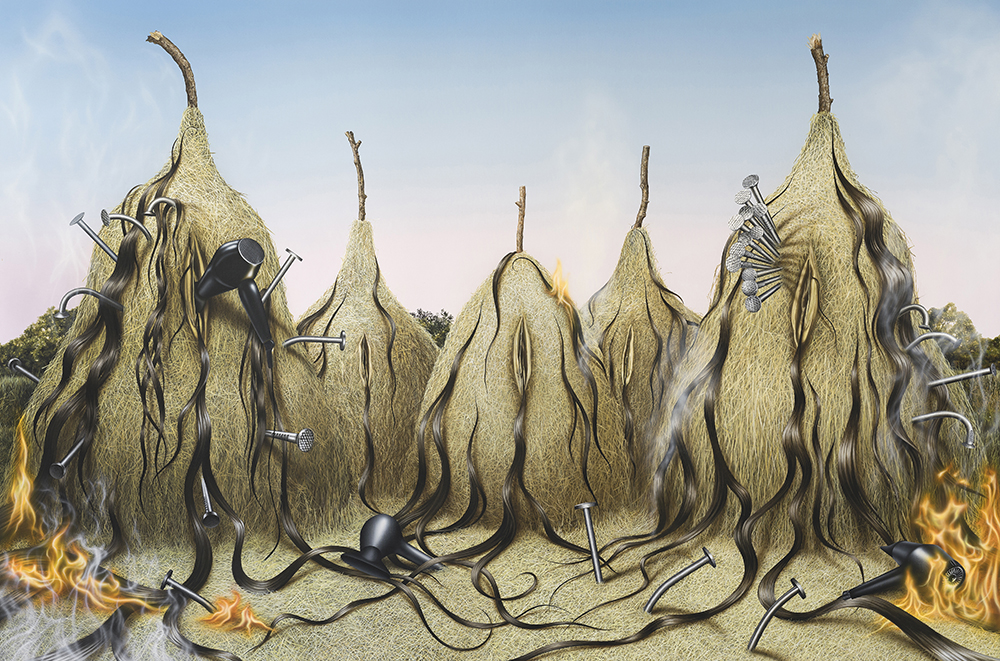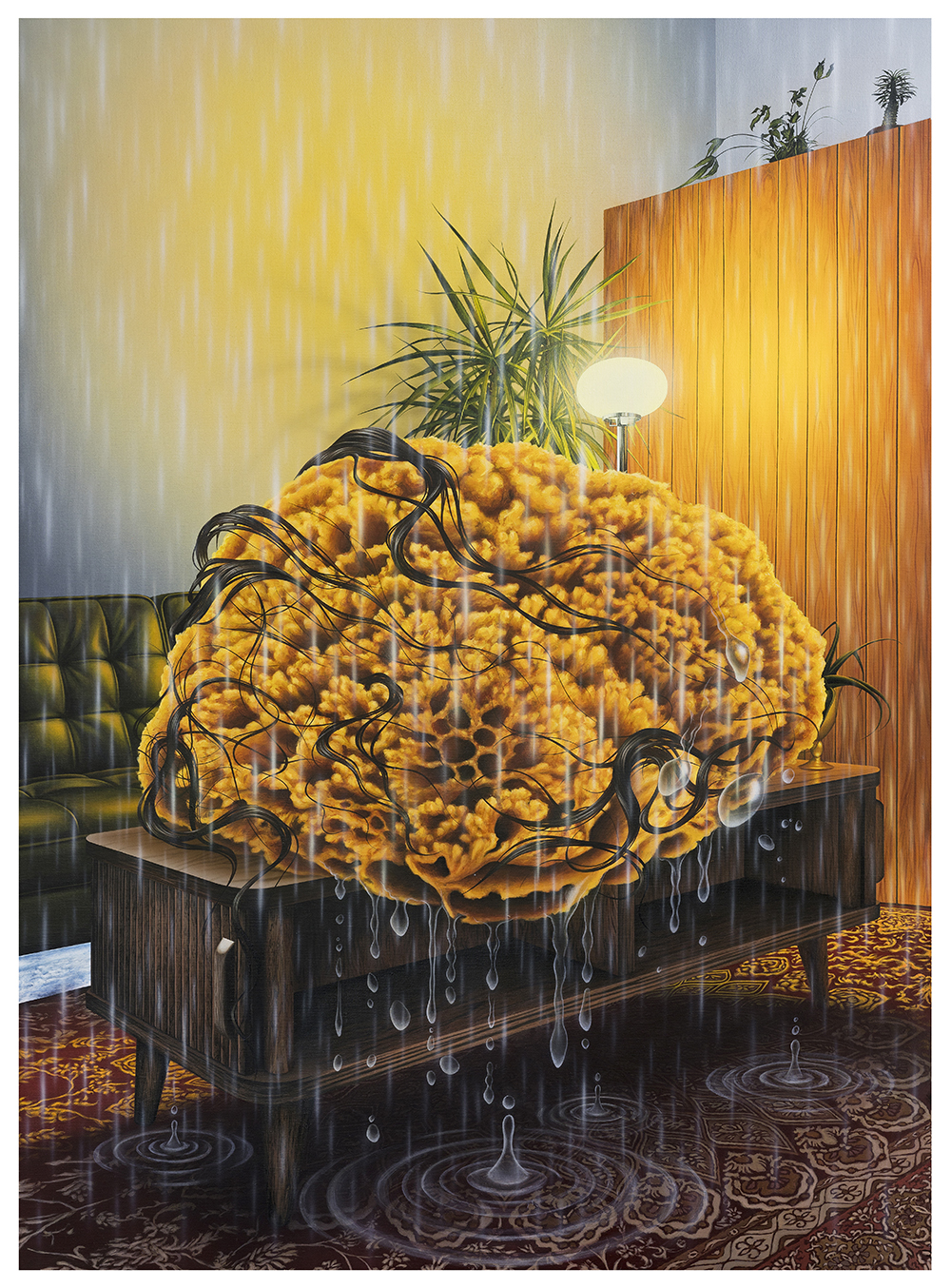In “Swamps and Ashes,” Sun Woo reflects on the contemporary desires and fears borne from our increasing interaction with and use of commodified technologies. Evoking visceral feelings against the backdrop of fantastical virtual environments, her paintings create a tension that reveals her experience growing up on the cusp of two cultures—she was born in South Korea and raised in Toronto—and generations.
Just as technology fractionates our sense of space, so too do her eerie compositions, in which she attempts to affix conceptual sensations. Sun Woo’s works mimic the surreal (yet now ordinary) feeling of viewing the world through a screen; her depictions of everyday objects—ironing boards, ashtrays, drains and keyholes—are altered by absurd and disconcerting elements, and thus enter a realm unbound by physical restrictions. In Long Shower (all works 2023), an unsightly sea wool sponge, larger-than-life and swathed in glistening, spidery strands of hair like something out of a body-horror film, sits in the middle of a living room replete with plants and mid-century modern furniture. A mysteriously impervious lamp glows in the background while rain pours inside the room, and the sponge drips a swamp onto the carpet below.
Other works similarly feature corporeal elements in dreamy and often grotesque states, which come together to arouse peculiar and specific physical conditions, such as being saturated in hot steam (Down in the Grove) or engulfed in flame (Salamander’s Cottage). Depicting straw mounds anthropomorphized with soft crevices and cascades of shiny black hair, Brittle Landscape uses rough-hewn texture and unexpected visual cues, such as hair dryers and crooked nails, to suggest the vulnerability of today’s body as it interacts with unforgiving surroundings. In Ashes, hair creeps out from the ridges of an ashtray while its contents simultaneously convey a charred wasteland or a closeup of a parched scalp in which, through extermination, regrowth is possible.

Sun Woo, Brittle Landscape, 2023. Photo: Jong Hyun Seo. Courtesy of the artist and Make Room, Los Angeles.
In all the paintings, Sun Woo’s hyper- realistic technique is achieved through digital renderings followed by a mixture of airbrushing and painting. The resulting works have both the softness of traditional painting and the brusque precision of computer-generated imagery. Through the interplay of the physical body and the digital sphere, she treats the surface of her works like skin and constructs new “bodies” in canvas that carry, like scars, traces of her memories and experiences. She also invites viewers to experience cryptic snippets of her personal history. Room of Haze is a visual representation of flesh memory: the artist uses skin-like garments on a drying rack doused with mist to recall the damp atmosphere of her childhood living room in Seoul, where her mother would hang laundry during the rainy summer seasons.
Anything feels possible in Sun Woo’s striking compositions. Just as easily as users grow desensitized to a barrage of bizarre digital imagery, viewers become easily lost in her virtual world and soon grow unfazed by the unpredictable nature of her juxtapositions. Her paintings stimulate twinges of discomfort, feelings of uncanny familiarity and, above all, a sense of consternation regarding the inescapable entanglement of bodies and technology.


